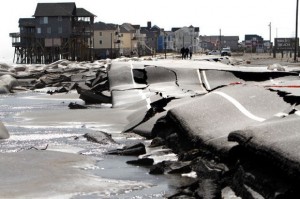
Did you know that the rain from our frequent storms can actually dissolve roadways, if given enough time?
Hurricane season is approaching for the east coast of America. Soon, it will be storm after storm, and you’re probably aware that this will inevitably affect the infrastructure of your state’s constructions. Bridges are subject to high winds, buildings leak, and even mild tornadoes can end up ruining an otherwise sound structure. But did you know that the rain from our frequent storms can actually dissolve roadways, if given enough time? Read on if you’re interested in protecting your pavement from this disaster.
How does it happen?
Water can erode the surrounding areas of the road, and this is more likely to happen before the road itself starts to deteriorate. It is absolutely possible to erode asphalt, but for the most part, the water damage comes from underneath. Water can seep in through tiny cracks, either from a recent storm or already existing groundwater underneath the pavement. Asphalt actually absorbs some of this moisture over time. When the water starts to dissolve the bonding agent in asphalt, you’ll begin to see cracks and sunken areas of your pavement.
How can you prevent this?
The materials you make the pavement out of matter. Your asphalt should not be porous–this can be prevented by a higher gradation, wherein the material is densely packed. This way, water has a harder time being absorbed into the asphalt. Depending on where you live, certain stone can be added to the asphalt mixture in order to properly match the amount of water damage that will be in the area. Some stones are more water-resistant than others, and while this can get pricey, it saves costs in the end.
How can you keep your pavement in shape?
Just like your car, pavement needs frequent but slight tuning in order to stay in shape. The maintenance has to be perfectly aware of what kind of pavement is being worked on. If the asphalt is more porous, the overlay has to match so water doesn’t get trapped in air bubbles. Also, with a better structure, asphalt is going to repel water easily.
Read more about water damage to pavement here.
Does your pavement need fixing after water damage? PTG Enterprises has you covered.
We understand–it’s difficult to keep pavement up-to-date. High traffic areas can make this virtually impossible. With PTG Enterprises, you can fix that. When you hire PTG, you’ll work with Patrick Gillen from start to finish. This process begins with an initial site visit, a pre-construction meeting and setting expectations for the client and crew.
To learn more about Mill and Pave, please contact PTG Enterprises today by calling 410-636-8777! You can check us out on Facebook and Twitter as well!

















